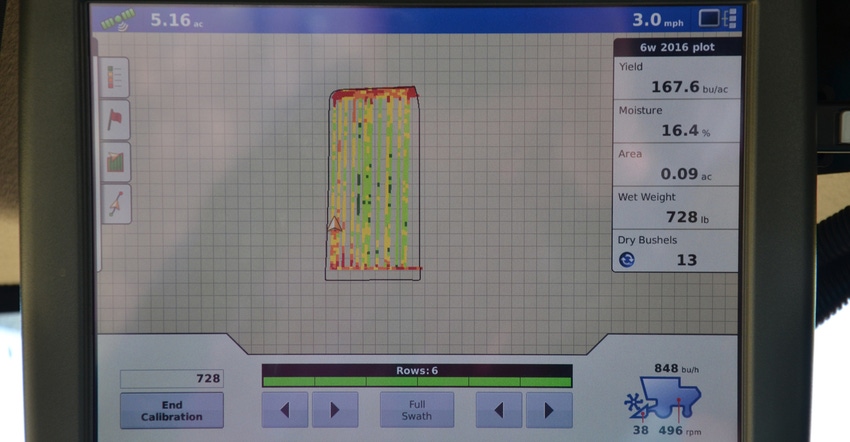December 10, 2018

By Clint Harrison
Your yield maps can give you more than bragging rights. A yield map can help you figure out problem areas in your field and plan for an even better crop in 2019.
For example, by comparing your yield map to a soils map, you may determine that some fluctuations in yield come from various types of soil that may need to be managed differently. Comparing yield maps to soil tests may help determine where amendments are needed for next year or where you can start increasing organic matter.
Other factors to evaluate include: crop hybrids and varieties; topographical maps showing low and high areas, and possible erosion; old land use; weather differences; and soil compaction from high-traffic areas.
It may take a few years to decide to make a major management decision based on your findings. Look at where the most losses came from, and what would be the most economical change.
For example, such changes could be improving precision application of fertilizer, chemicals and seed; reducing soil runoff; installing drainage; identifying compacted areas that may benefit from cover crops; or determining that a hybrid or variety isn’t suited for your soils and/or weather patterns.
On-farm trials
One key tool in monitoring yields is the ability to conduct on farm trials. Field trials can be set up to evaluate different nutrient rates, fungicide vs. no fungicide, and cover crop vs. no cover crop. Now’s the time to think about what on-farm field trials would be most beneficial in 2019. There’s no better place than your own farm to see how different genetics, products and management work for you.
Yield monitors revealed one thing in southeastern Indiana this fall: yields were good. With good yields come the benefits of high residue.
Indiana soils need residue to offset years of organic matter loss. Increases in organic matter can impact soil erosion, water quality, improved nutrient availability, increased water infiltration and much more.
However, residue can pose some potential problems that need to be addressed. Start with ensuring residue is spread evenly across the field. With high residue, the impact of heavy winter rain can cause residue to move, impacting drainage outlets or culverts.
Cover crops can be used not only to help keep residue in place, but also to help increase needed organic matter even more. Leaving more cornstalk attached reduces the potential for it to move and concentrate where it’s not wanted.
Maximize residue benefits
The importance of residue and permanent cover can many times be seen on the yield monitor when crossing old fencerows or areas more recently brought into production. These areas haven’t been disturbed and generally have some type of grass or permanent vegetation present.
When we bring these areas into production, we see the yield monitor hit higher yields in these areas. Why not mimic this across the entire field by reducing disturbance as much as possible? Provide the soil with a living root all year by planting a living cover during the times of the year when commodities aren’t grown. Maybe then that yield monitor will have a lot more areas of green and less red.
Harrison is a district conservationist with the Natural Resources Conservation Service. He writes on behalf of the Indiana Conservation Partnership.
You May Also Like




